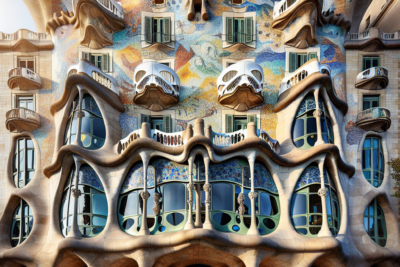
- Book Your Tickets to Sagrada Familia: A Step-by-Step Guide
- Discover the Architectural Wonders of Gaudí in Barcelona
- The Best Time to Visit Sagrada Familia: Tips for Your Trip
- Understanding the Symbolism Behind Sagrada Familia's Design
- How to Make the Most of Your Visit to Gaudí's Masterpiece
- Exploring the History and Evolution of Sagrada Familia
Barcelona is a city renowned for its stunning architecture, vibrant culture, and rich history. Among its many treasures, the Sagrada Familia stands out as a beacon of creativity, showcasing the genius of Antoni Gaudí. This iconic basilica attracts millions of visitors each year, making it a must-see landmark on any trip to the city.
To fully appreciate this architectural marvel, it's essential to secure your entry in advance. **Book Your Tickets to Sagrada Familia Barcelona and Discover Gaudí's Masterpiece** to witness the intricate details and breathtaking interiors that define this UNESCO World Heritage Site. Don't miss the chance to explore a symbol of Barcelona that continues to inspire awe and admiration.
Book Your Tickets to Sagrada Familia: A Step-by-Step Guide
Booking your tickets to the Sagrada Familia is a straightforward process that will enhance your visit to this magnificent site. Firstly, visit the official Sagrada Familia website where you can find a variety of ticket options tailored to your needs. It's advisable to choose a time slot that suits your schedule to avoid long waiting times. Make sure to check for any available discounts, especially for students or large groups.
Once you've selected your tickets, secure your booking by providing your personal details and making the payment online. After completing the transaction, you will receive a confirmation email containing your tickets. Print them out or save them on your mobile device; both options are accepted at the entrance. Remember, booking in advance not only saves time but also guarantees entry on busy days.
Consider the following tips to make the most of your visit:
- Visit early in the morning or later in the afternoon to experience fewer crowds.
- Plan to spend at least 1.5 to 2 hours exploring the basilica and its surroundings.
- Take advantage of the audio guide available, as it provides in-depth insights into Gaudí’s creative vision.
If you are traveling with family, you might want to compare different ticket options, such as guided tours versus general admission. Here's a quick comparison:
| Ticket Type | Price | Benefits |
|---|---|---|
| General Admission | €26 | Access to the basilica and museum. |
| Guided Tour | €40 | Includes expert guide and skip-the-line access. |
Discover the Architectural Wonders of Gaudí in Barcelona
Antoni Gaudí's architectural wonders in Barcelona are a testament to his unique vision and creativity. His designs blend natural forms with innovative techniques, resulting in structures that almost seem to come alive. Visitors to the city will find themselves captivated by the vibrant colors, organic shapes, and intricate details that characterize Gaudí's work, making it a must-see for architecture enthusiasts.
Among the most notable sites are Park Güell, a whimsical park filled with colorful mosaic tiles and fantastical sculptures, and Casa Batlló, recognized for its flowing façade and stunning interiors. Each of these locations showcases Gaudí's ability to harmonize architecture with nature, creating immersive experiences that invite exploration.
To truly appreciate Gaudí's legacy, consider visiting Casa Milà (La Pedrera) as well, which features a rooftop adorned with surreal chimneys that resemble warriors. Additionally, the Sagrada Familia continues to evolve, with ongoing construction that reflects Gaudí's original vision. Each of these masterpieces contributes to the story of Barcelona's architectural evolution.
Here’s a quick overview of Gaudí's must-visit sites in Barcelona:
- Sagrada Familia - Iconic basilica under construction since 1882.
- Park Güell - A public park filled with colorful mosaics.
- Casa Batlló - Famous for its organic shapes and vibrant colors.
- Casa Milà (La Pedrera) - Known for its undulating stone façade and unique rooftop.
The Best Time to Visit Sagrada Familia: Tips for Your Trip
The best time to visit the Sagrada Familia is crucial for a memorable experience. Early mornings or late afternoons typically offer fewer crowds, allowing you to appreciate Gaudí's masterpiece without the hustle and bustle. Additionally, consider visiting during the off-peak seasons, like late fall or winter, when fewer tourists flock to Barcelona.
For those looking to maximize their visit, here are some helpful tips:
- Avoid weekends to escape the larger crowds.
- Check for special events or services that might draw more visitors.
- Make use of the different ticket options to find one that fits your schedule and budget better.
When planning your trip, take into account the following factors to ensure a smooth experience:
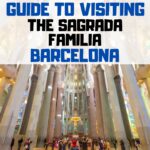 The Ultimate Guide to Sagrada Familia Barcelona: Official Tickets and Tips
The Ultimate Guide to Sagrada Familia Barcelona: Official Tickets and Tips| Factor | Best Time | Notes |
|---|---|---|
| Crowd Levels | Weekdays | Less crowded compared to weekends. |
| Weather | Spring and Fall | Ideal temperatures for exploring. |
| Construction Progress | Ongoing | Check updates for areas under renovation. |
Lastly, remember that the Sagrada Familia has different closing times throughout the year. Always verify the schedule before your visit to make the most out of your time at this remarkable site. Enjoy your exploration of Gaudí's visionary architecture!
Understanding the Symbolism Behind Sagrada Familia's Design
The Sagrada Familia is not just an architectural wonder; it is a profound expression of symbolism that permeates every aspect of its design. Gaudí infused the basilica with elements drawn from nature, religion, and the cosmos. Each façade and tower serves to convey a specific message, making it a living testament to his vision of unifying faith and architecture. This devotion to symbolism is evident in the way natural forms are integrated into the structure, inviting visitors to reflect on the deeper meanings behind what they see.
One of the most striking features of the Sagrada Familia is its three main façades, each dedicated to a distinct phase of Christ's life: the Nativity, the Passion, and the Glory. The Nativity façade is adorned with intricate carvings that celebrate the birth of Jesus, while the Passion façade presents a more austere and dramatic interpretation of his suffering and death. Finally, the Glory façade, still under construction, will symbolize the resurrection and eternal life. This tripartite division reflects Gaudí's intention to narrate the story of Christ in a visually captivating manner.
Additionally, the basilica's twelve towers represent the twelve apostles, each designed to embody different traits or characteristics. The tallest tower, dedicated to Jesus Christ, will rise to 172.5 meters, symbolizing his prominence within Christianity. The surrounding towers will be adorned with intricate sculptures and motifs that resonate with the apostles' virtues, creating a sense of harmony between the structure and the teachings of the faith.
To further enhance your visit, consider exploring these key symbolic elements:
- Nature - Gaudí’s incorporation of organic shapes and forms reflects his deep reverence for the natural world.
- Light - The strategic placement of stained glass windows allows light to filter through, creating a spiritual ambiance.
- Geometry - The use of geometric patterns mirrors the natural order and divine creation.
How to Make the Most of Your Visit to Gaudí's Masterpiece
To truly make the most of your visit to Gaudí's masterpiece, consider joining a guided tour. These tours provide insightful commentary on the basilica’s history, architecture, and the genius behind Gaudí's vision. Moreover, a knowledgeable guide can help you navigate through the intricate details and hidden stories that enrich your experience. This can turn a simple visit into a deeply engaging exploration of art and spirituality.
Additionally, don’t forget to explore the surrounding area. The Sagrada Familia is situated in a vibrant neighborhood filled with charming cafés and shops. Taking a leisurely walk around can enhance your visit by allowing you to soak in the local culture. You might also want to capture some stunning photographs of the basilica from various angles, particularly from the nearby Park de la Sagrada Familia, which offers picturesque views.
Timing your visit is crucial; aim to catch the basilica at different times of the day to see how the light transforms its appearance. Morning visits provide a serene atmosphere, while the golden hour just before sunset illuminates the stonework beautifully. Make sure to check the daily schedule so you can witness any special events or performances that may be taking place during your visit.
Lastly, take a moment to appreciate the smaller details. From the ornate facades to the stunning stained glass windows, the Sagrada Familia is a treasure trove of artistic expression. Consider focusing on specific elements, such as the unique motifs and sculptures that decorate each section, as they reveal much about Gaudí's inspirations and intentions. This mindful exploration will deepen your connection to this architectural wonder.
Exploring the History and Evolution of Sagrada Familia
The Sagrada Familia's journey began in 1882 when architect Francisco de Paula del Villar was initially commissioned to design it. However, the project took a transformative turn when Antoni Gaudí assumed control in 1883. Under his guidance, the basilica evolved into a unique combination of Gothic and Art Nouveau styles, showcasing Gaudí's innovative use of forms inspired by nature. This shift marked the beginning of a visionary approach that would define the structure's ongoing evolution.
As construction progressed, Gaudí dedicated the latter part of his life exclusively to the basilica, believing it to be his life's work. His deep spiritual conviction fueled the project, which was envisioned as a testament to Christianity. By the time of his tragic death in 1926, only a fraction of the structure was completed. Since then, the project has continued under the guidance of various architects, striving to fulfill Gaudí's original vision while incorporating modern techniques. Today, the Sagrada Familia is celebrated not only for its architectural grandeur but also for its rich history.
To appreciate the evolution of the Sagrada Familia, consider the following milestones:
- 1882 - Groundbreaking and initial plans by Francisco de Paula del Villar.
- 1883 - Antoni Gaudí takes over the project, introducing his distinctive style.
- 1926 - Gaudí's death; only a small portion of the basilica is complete.
- 2026 - Projected completion, marking the centenary of Gaudí's passing.
The Sagrada Familia remains a living monument, with construction techniques adapting over time to maintain Gaudí's vision while ensuring structural integrity. As visitors explore its intricate details, they witness the continuous dialogue between past and present, embodying the essence of Barcelona's cultural heritage. This masterpiece serves as a reminder of the relentless pursuit of artistic excellence and the powerful stories each stone holds.
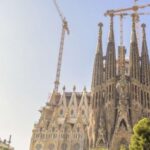 Exploring the Majestic Sagrada Familia in Barcelona: A Guide to Booking Tickets
Exploring the Majestic Sagrada Familia in Barcelona: A Guide to Booking TicketsIf you want to know other articles similar to Book Your Tickets to Sagrada Familia Barcelona and Discover Gaudí's Masterpiece you can visit the category WHERE YOU CAN GO.
Deja una respuesta

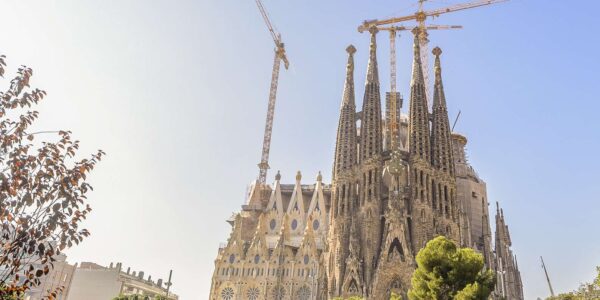
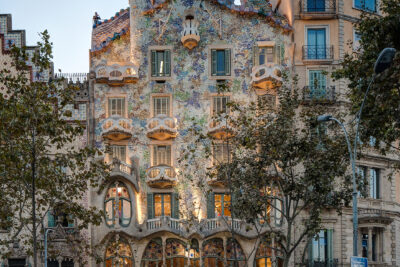
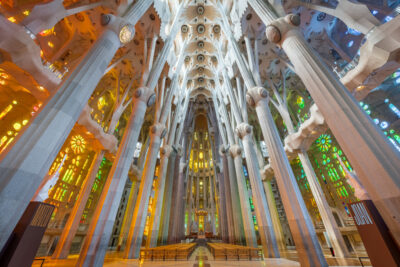
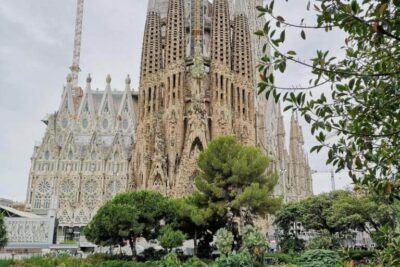
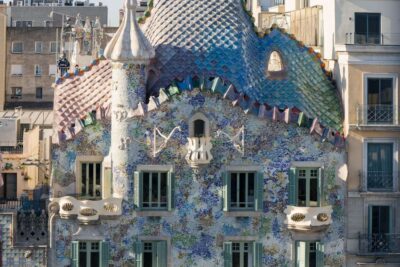
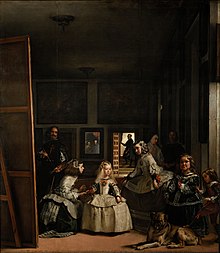
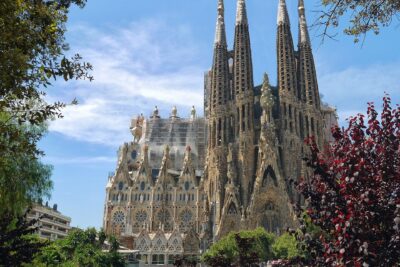
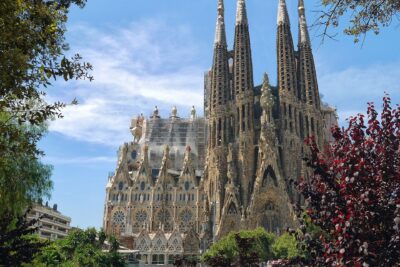
Read more!